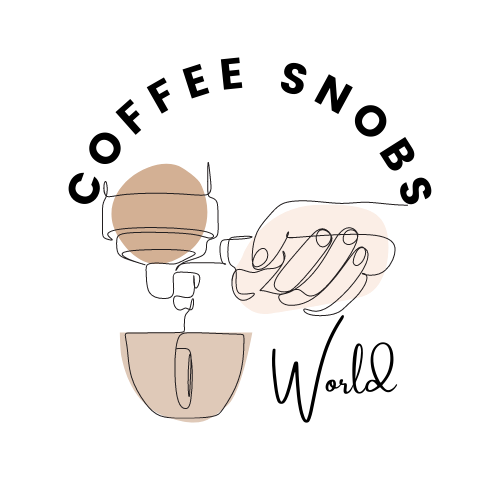Caffeine tolerance varies from person to person, but how long does it take to reset caffeine tolerance? Many people rely on a regular cup of coffee or tea daily and don’t think twice about how much they consume.
But with the right amount of time and effort, you can reset your body’s caffeine tolerance and become more sensitive to caffeine’s effects. Read on to learn more!

What’s Caffeine Tolerance?
Caffeine tolerance is a person’s ability to metabolize caffeine. When people consume caffeine regularly, their bodies become accustomed to it and require higher amounts to achieve the same effects. This can lead to caffeine dependence and unpleasant side effects such as headaches, jitters, and insomnia when you lower or stop caffeine consumption.
The Workings of Caffeine Tolerance
The chemical composition of caffeine is strikingly similar to that of adenosine, a natural neurotransmitter in the brain responsible for slowing down neuronal activity and promoting sleepiness.
Caffeine’s stimulatory effects on the central nervous system and energy levels are largely due to its blocking of adenosine A2A receptors (A2ARs) in the brain.
This action inhibits adenosine receptor activity, creating an overall feeling of alertness and arousal. From improved focus to increased endurance, this biological mechanism is key for reaping caffeine’s energizing benefits!
The need for more and more caffeine to evoke similar effects is because constant consumption of coffee changes not just the density but also the number of adenosine receptors in our brains, as well as those related to adrenergic, cholinergic, GABAergic, and serotonergic.
Chronic caffeine consumption dramatically increases cortical and striatal adenosine receptor levels by up to 20%. Furthermore, the elevation in muscarinic receptors is far more pronounced at 40-50%, while benzodiazepine binding sites linked with GABAAR receptors skyrocketed by an impressive 65%.
In a nutshell, the brain compensates for its lack of energy by manufacturing more adenosine receptors. To create similar impacts and reduce drowsiness, you’ll have to consume higher amounts of caffeine – which may lead to exhaustion if you don’t rest adequately.
Signs and Symptoms of Caffeine Tolerance
The more caffeine a person consumes, the harder it will become for them to recognize its effects. Caffeine tolerance is associated with the following signs and symptoms:
- Needing to consume more caffeine for the same effects
- Difficulty sleeping or feeling tired soon after drinking coffee
- Experiencing jittery feelings and anxiety
- Insomnia or other sleep disturbances
- Headaches, dizziness, or other physical discomforts
- Feeling “wired” instead of energized
- Irritability or difficulty concentrating
How Long Does it Take to Reset Caffeine Tolerance?
It’s vital to remember that each person is different; thus, individuals will react differently to caffeine. But how long does it take for caffeine tolerance to reset? If caffeine has become an integral part of your routine, removing it could be a difficult transition.
Expect withdrawal symptoms like headaches, fatigue, and even flu-like sensations while your body adapts to the sudden change in consumption.
Your moods could also take some time to get back on track, while focus and concentration will probably feel scattered for days or weeks afterward. Caffeine tolerance can form rapidly, but resetting it may require more effort.
To gain insight into the time course of caffeine tolerance, a 2019 study published in PLOS One investigated 11 active and healthy individuals. For 20 days, a group of people took either 0.0001 ounces/2.2 pounds (3 milligrams/kilogram) per day of caffeine or a placebo.
After 15 days of caffeine consumption, peak cycling power was significantly higher than the placebo; however, its effects began to diminish for the remaining period. Both physical tests showed that caffeine’s impact on day one was stronger and decreased as time passed.
By decreasing your caffeine consumption over two or more weeks, you’re giving your adenosine receptors time to reset themselves back to their typical level. Doing this will intensify the effects of consuming caffeine when you have it again due to its increased potency.
So, how long does it take for caffeine tolerance to reset? Opinions may differ, but many agree that two weeks of reduced caffeine intake should be enough. Additionally, your ability to recover will depend on how much coffee you usually drink and how much caffeine your body needs to stay alert and energized.

Coffee Snob’s Tips on Resetting Caffeine Tolerance
If you want to reset your caffeine tolerance, you have two routes: taking the plunge with a cold-turkey cut or decreasing your intake bit by bit. It won’t be easy either way, but we’ve got some advice to help ease the process.
Set a Time Limit
Taking regular breaks from caffeine can help reset your tolerance. For example, you could limit yourself to not having coffee after 1 pm or only a few days a week.
Go Cold Turkey
If you’ve been drinking coffee daily, going cold turkey is the quickest way to reset your caffeine tolerance. You can start by reducing how much you have or replacing it with decaffeinated coffee or herbal teas to monitor how your body is responding.
Cut Caffeine Gradually
Decreasing your caffeine intake too quickly can result in uncomfortable withdrawal symptoms.
To avoid experiencing adverse reactions, gradually reducing your daily caffeine intake is best. This is especially essential if you consume more than 0.008 ounces (250 milligrams) of caffeine daily. Quitting anything is risky, even more true when cutting an addiction by cold turkey.
You’re more than likely going to experience intense symptoms such as fatigue, headaches, or nausea. Weaning off slowly will still have adverse effects, but they should be much less severe. It takes around ten days for your body to reset its caffeine tolerance, so before you reduce the amount again, make sure you’ve allowed a full 10-day period.
Get the Right Amount of Sleep
Caffeine withdrawal can be daunting, often accompanied by fatigue. Thankfully, the cure for this is sleeping! But beware: too little shut-eye may lead to exhaustion just as much – if not more so – than oversleeping. The key lies in finding that perfect balance; a good night’s rest now and then will keep you feeling refreshed!
To alleviate the sluggishness that often accompanies caffeine withdrawal, strive for 7 to 8 hours of sleep each night. Read our article and find out Why Doesn’t Coffee Wake Me Up?
Bring the Tylenol
A headache is the foremost symptom of caffeine withdrawal, and Tylenol can be your savior! A low-dosage painkiller such as Tylenol will provide short-term relief from those nasty headaches. Try not to make it a long-term solution, but using it occasionally when needed could help you reset your tolerance levels.
Use Natural Coffee Alternatives
Many people are oblivious to the wealth of alternatives that can replace their morning cup of coffee. Not only do these other caffeine sources provide a welcome change, but they also offer long-term health benefits!
Consider the following options:
Omega 3: Omega-3-rich foods like salmon and walnuts can provide a natural energy boost that helps reduce caffeine dependence and is healthier than a cup of coffee.
Matcha: This green powder, made from ground tea leaves, maybe a better alternative to coffee as it contains the same amount of caffeine but is much richer in antioxidants, vitamins, and minerals.
L-Theanine: It is a substance with known stimulant effects. You can find it in tea, providing a more sustained energy boost than coffee as it increases alpha brain waves, which helps with relaxation and focus. It also aids mental alertness and focus without the jitters associated with coffee.
Apple cider vinegar: A teaspoon of apple cider vinegar in a glass of warm water can help to stimulate the metabolism, reduce fatigue, and provide natural energy throughout the day.
Spirulina: This superfood alga is naturally rich in caffeine, plus it contains iron and vitamins B1, which help to regulate thiamine levels in the body. This results in a longer-lasting energy boost compared to the one provided by coffee.
Take Time Off
When resetting your caffeine tolerance, it’s important to give yourself a break and take some time off caffeine. This doesn’t have to be forever, but it can help your body reset itself and get used to low or no caffeine intake.
Nourish Your Body
Make sure you’re getting enough sleep and eating a balanced diet. A healthy lifestyle will help your body adjust to lower levels of caffeine and better cope with caffeine’s effects when you consume it.
Exercise Regularly
Exercise is a great way to increase energy levels and boost alertness without using caffeine. Regular exercise can also help you get better quality sleep and reduce the amount of caffeine needed for alertness.
By taking these steps, you can reset your caffeine tolerance and start to enjoy the effects of coffee again. When done correctly, it’s possible to reduce caffeine intake without feeling exhausted or tired. Plus, you’ll be able to enjoy the energizing benefits of caffeine for a longer period.
How Long Does it Take for Caffeine Tolerance to Manifest?
While it usually takes around ten days to develop a caffeine tolerance, certain individuals have reported establishing one in merely two days. This could be the placebo effect; however, some people generate resistance faster than others.
Therefore, if you are hoping to reclaim your coffee intake and reset your caffeine level, it is likely that you will eventually return to where you started.
How Much Caffeine is Too Much?
It depends. Everyone’s different, and some people may be more sensitive to the effects of caffeine than others. Generally, adults should consume no more than 0.014 ounces (400 milligrams) of caffeine daily.
That’s equivalent to four cups of coffee, ten cans of soda, or two “energy shot” drinks. It is important to note that some people may experience negative symptoms after consuming just a small amount of caffeine, while others may need a higher amount to feel the full effects.
It is also essential to consider how regularly you consume caffeine. If you drink coffee or energy drinks every day, you may find that your body builds up a tolerance. This means it will take more caffeine to achieve the same effects. Caffeine tolerance can manifest in a matter of days, depending on how often and how much caffeine you consume.
What is Caffeine Half-Life?
Half-life is the duration in which a quantity of a material decreases to half its original amount. Therefore, if you had 0.0003 ounces (10 milligrams) of caffeine at one point, after 5 hours, your body would still contain 0.00017 ounces (5 milligrams) of that same stimulant.
After taking in caffeine, it takes approximately 30 to 60 minutes for its effects to reach their full peak. Due to the stimulant, you’ll probably feel a bit jittery during this period. You might use the restroom more frequently because of the liquid volume ingested and its diuretic qualities.
The remaining half will take another five hours to process, and so on. This is why it’s essential to spread your caffeine consumption throughout the day if you are sensitive to its effects.
FAQS
How Can You Tell If You Have Caffeine Tolerance?
If you find that it takes more and more caffeine to get the same effect as before, this is usually a sign of tolerance. Additionally, if you find that the effects of caffeine seem to wear off quickly and require more frequent doses, this could also indicate tolerance. You should speak with your doctor if you are concerned about how much caffeine you consume.
Are There Any Foods That Will Help Me Reset My Caffeine Tolerance?
Yes. Eating a balanced diet rich in whole grains, proteins, healthy fats, fruits, and vegetables can help reset caffeine tolerance. Foods high in magnesium (such as spinach and dark chocolate) can also help reduce how much caffeine is needed to reach a desired level of alertness.
Additionally, foods containing L-theanine (such as green tea) can help reduce the jitters and other side effects of caffeine.
Can You Increase Caffeine Tolerance?
Yes. Drinking coffee and other caffeinated beverages regularly can cause the body to build tolerance. This means it will take more caffeine to achieve the same effects. It is important to note how much and how often you consume caffeine to avoid developing a tolerance.
How Do I Reverse Caffeine Tolerance?
If you want to reverse caffeine tolerance, reducing how much and how regularly you consume caffeine is important. A break from caffeine for at least ten days will help reset your body’s tolerances.
Exercise and drinking more water can also help reduce caffeine’s effects. It is important to note how sensitive you are to caffeine and how much it takes to reach your desired level of alertness. This way, you can adjust how much caffeine you consume accordingly.
It is also beneficial to spread your caffeine consumption throughout the day if you are sensitive to its effects. Doing this can help keep the body’s caffeine level at a more consistent and manageable rate. Ultimately, how to reverse caffeine tolerance depends on how you adjust your daily caffeine intake.

A Final Word
Whether a coffee lover or casual drinker, you may wonder how long it takes to reset caffeine tolerance. A reset period of one to two weeks should be sufficient for most people to recover complete caffeine tolerance.
If you experience withdrawal symptoms or find it challenging to stick to the plan, lengthening the reset period may be necessary. Remember that results may vary from person to person and that sticking to a healthy diet and exercise routine is always a good idea.
We hope this guide has given you the information you need to decide when and how often to enjoy your favorite caffeinated beverages. A final word of advice: be sure to listen to your body and don’t overdo it – too much of a good thing can quickly become a bad thing when it comes to caffeine.

